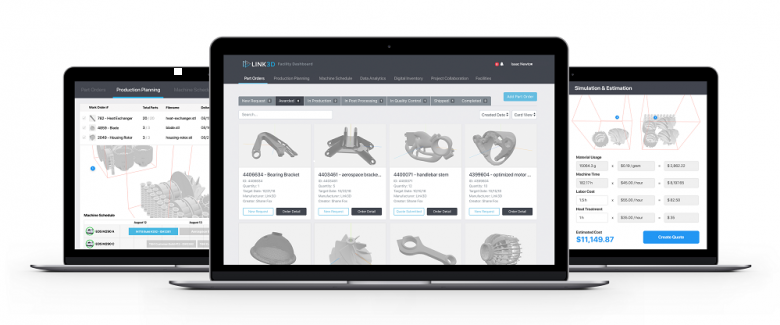COO
- FMA
- The Fabricator
- FABTECH
- Canadian Metalworking
Our Publications
Categories
- Additive Manufacturing
- Aluminum Welding
- Arc Welding
- Assembly and Joining
- Automation and Robotics
- Bending and Forming
- Consumables
- Cutting and Weld Prep
- Electric Vehicles
- En Español
- Finishing
- Hydroforming
- Laser Cutting
- Laser Welding
- Machining
- Manufacturing Software
- Materials Handling
- Metals/Materials
- Oxyfuel Cutting
- Plasma Cutting
- Power Tools
- Punching and Other Holemaking
- Roll Forming
- Safety
- Sawing
- Shearing
- Shop Management
- Testing and Measuring
- Tube and Pipe Fabrication
- Tube and Pipe Production
- Waterjet Cutting
Industry Directory
Webcasts
Podcasts
FAB 40
Advertise
Subscribe
Account Login
Search
Software helps companies meet additive manufacturing challenges
- By Janet Kar
- December 21, 2018
Data shows that the additive manufacturing industry grew 21 percent from 2016 to 2017 (Wohlers Associates). With so many businesses now embracing industrial 3D printing, it is natural for them to move from R&D to prototyping to the production of parts.
At each stage, 3D printing supply chains begin to mature. OEMs grow their workforce, service bureaus become certified partners, and more engineers within the organization begin to design parts with additive manufacturing in mind.
As the result of scaling up their operations, four major challenges begin to surface ─ especially in the aerospace, automotive, defense, and industrial sectors.
The challenges are:
1. Inefficient and manual workflows. As organizations grow, they begin to piece together multiple software systems, including CAD, PLM, PDM, ERP, and spreadsheets to manage their projects, RFQs, and internal orders. Communication is dispersed across a porous network of emails, word-of-mouth, phone calls, and texts.
2. Production planning. From centralizing order requests, developing accurate quoting or costing models, forecasting material usage, and build time, businesses begin to experience upstream and downstream bottlenecks. This prevents them from maximizing production output.
3. Lack of data transparency. As companies get bigger, they increase the number of machines operated, expand material inventories, introduce new AM facilities, and add service-bureau partners. This growth clouds data transparency. Companies begin to lose track of internal and external production capabilities, knowledge transference becomes less consistent, and audit trails weaken ─ all of which erodes traceability.
4. Data rich, insight poor. Even if organizations are able to collect data across individual software and hardware systems, this information is difficult to access. As a result, organizations become data rich but insight poor and are no longer able to gain the type of actionable insights that drive smart business and operational decisions.
Efficient end-to-end workflow technology is important with additive manufacturing, particularly for organizations looking to enable R&D divisions and adopt series production.
A digital strategy to connect internal and external 3D printing ecosystems that can integrate with enterprise software and 3D printers should include built-in AM solutions. An example is build-simulation software that forecasts production costs, material usage, and build time.
AM software should include features such as a centralized ordering system, auto- and user-controlled quoting, costing, production planning and scheduling, post-processing, work-plan management, quality inspection, logistics, spare-parts management with end-to-end data analytics, and track and report metrics.
These strategic elements help organizations gain insights that can be turned into useful actions. They help everyone from corporate and facilities managers to engineers to procurement personnel make better decisions and overcome the day-to-day challenges of 3D printing.
About the Author
About the Publication
- Podcasting
- Podcast:
- The Fabricator Podcast
- Published:
- 04/16/2024
- Running Time:
- 63:29
In this episode of The Fabricator Podcast, Caleb Chamberlain, co-founder and CEO of OSH Cut, discusses his company’s...
- Trending Articles
- Industry Events
16th Annual Safety Conference
- April 30 - May 1, 2024
- Elgin,
Pipe and Tube Conference
- May 21 - 22, 2024
- Omaha, NE
World-Class Roll Forming Workshop
- June 5 - 6, 2024
- Louisville, KY
Advanced Laser Application Workshop
- June 25 - 27, 2024
- Novi, MI




























